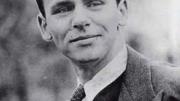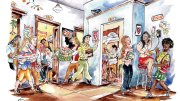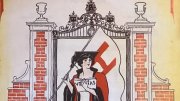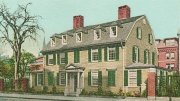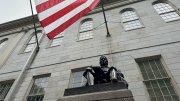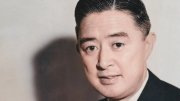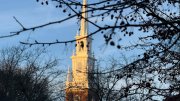The bow and arrow press, ensconced in the Adams House B-Entry basement, keeps alive the art of letterpress printing. But sometimes news about venerable technologies travels via newer ones. A June email to the Bow and Arrow list, kindly forwarded by Mary Murphy ’99, an occasional student at the press, with “From the Unknown Co-Founder” as the intriguing subject line, plumbs the origin story.
According to Richard Binell ’79, he “found the 1916 Vandercook proof press collecting dust and rust” in the Adams basement in 1978—and “dragged it out in pieces and found a place to fix it.” An inhabitant of G entry in Randolph Court, he “liked exploring the basements, attics, and yes, the lovely slate roofs of Adams House.” (Ah, the late 1970s!) He also had a work-study job in the psychology department machine shop, on the tenth floor of William James Hall, and hung out there, building apparatus for faculty.
Per Binnell, classmate Jim Barondess ’79, Ph.D. ’93, also claims credit. In Binell’s telling, it was he who as the machinist of the duo repaired the old press—in the process finding an original manual for the unit in Widener, identifying missing parts, and proceeding to make replacements. Barondess, by this account, cared more about typography and the finished, printed works. Later in life, Barondess became a designer.
Jointly, Binell continues, he and Barondess called on printing companies in Boston to cadge cases of lead type, which had been rendered obsolete by photocomposition. Their pitch: instead of seeing it melted down “into fishing weights, you can donate your type to Harvard, and we’ll not only give you a receipt for your donation, we’ll give you a receipt for any amount you wish.…And you can come visit it in our basement Bow & Arrow print shop. It’s valuable to us. We care about it and will take good care of it.”
Binell concludes, “I think we did a good thing.”
James Agee ’32 is remembered for his journalism, such as Let Us Now Praise Famous Men (with photographs by Walker Evans); film criticism; screenwriting (including credit for The African Queen); and autobiographical novel, A Death in the Family, awarded a Pulitzer Prize posthumously, in 1957. His early death lingers, too.
The personal habits and interests that made him great no doubt contributed to that premature passing. Adam Kirsch’s appraisal for this magazine (“Vistas of Perfection,” subtitled “The self-dissatisfied life and art of James Agee,” May-June 2009, page 28) touched on some of these matters. A used-bookstore find, Remembering James Agee, edited by David Madden (Louisiana State University Press, 1974), invites further reflection on what ignites creative incandescence. For Agee encountered—and engendered—more than a little turbulence.
In his roommate Robert Saudek’s recollection, Agee, as president of the Advocate, went out to celebrate its wildly successful parody of Time as it went to press on a Saturday night. The next morning, Saudek found a note asking him to wake Agee for their Sunday job in the First Church octet—and beside it, a sealed manila envelope marked “Metropolitan District Police, Defendant’s Belongings.” The clothes were bloody, and Agee’s face was “bruised, puffy, and cut.” He and his girlfriend had indulged in a winter hike along the Revere Beach boardwalk, where they were “singing, laughing, and drinking from a bottle of bootleg gin” when two policemen ordered them to quiet down. “As the peace of that snow-swept beach was in no way being disturbed, Jim apparently reacted strongly enough that the two policemen…took him protesting, under each arm, lifted him in in the air and gave him a bum’s rush to the precinct headquarters where he was booked, ceremoniously relieved of his belongings…and then beaten up.”
Having made bail, Agee returned to Harvard Square. “He felt no shame….He believed that the city of Revere should have wanted him to have a good time that night in their silent, snow-covered amusement park. That they did not want him to…was beyond Jim’s comprehension, and he was more confused than outraged by that brutal assault.”
No, today’s aspiring writers ought not to try this at home. But it does make you wonder what good might come from more venturing outside the Cambridge bubble.
